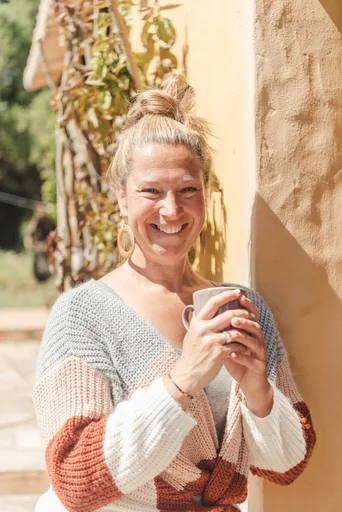Bridge Pose: How to Practice Setu Bandha Sarvangasana

Discovering the Bridge Pose
The Bridge Pose, also known as Setu Bandha Sarvangasana, is a fundamental yoga posture that offers a myriad of physical and mental health benefits. The name "Setu Bandha Sarvangasana" is derived from Sanskrit, with "Setu" meaning bridge, "Bandha" meaning lock, and "Sarvangasana" meaning shoulder stand. This pose is aptly named as it resembles the structure of a bridge, creating a gentle arch with the body while providing a sense of stability and balance.
Practicing the Bridge Pose can lead to remarkable improvements in spinal flexibility. As you lift and open up in the pose, it also stretches the chest and shoulders, countering the effects of prolonged sitting or bending forward. Additionally, it serves as an excellent way to stretch the front of the body, particularly the chest, shoulders, and neck. Moreover, this pose strengthens the back muscles and can help relieve any back pain or stiffness.
According to research published in the International Journal of Trend in Scientific Research and Development, Bridge Pose is considered a mild inversion since it places your heart higher than your head. This positioning offers various benefits such as relief from anxiety, stress, mild depression, insomnia, and fatigue by calming the mind and reducing blood pressure.
Furthermore, one study found that regular practice of Bridge Pose improves deep abdominal muscle thickness. Another study highlighted how this pose helped prevent back pain that women might have experienced from wearing certain types of footwear.
It's important to note that Bridge Pose offers far more than just physical benefits; it serves as a bridge to inner peace by connecting the physical, mental, and spiritual dimensions of yoga. Through this pose, practitioners can strengthen their bodies, release emotional tension, calm their minds, and foster spiritual growth. It is a powerful reminder that yoga is not solely a physical practice but a journey of self-discovery and transformation ultimately leading to inner peace.
Preparing for Setu Bandha Sarvangasana

Before delving into the practice of Setu Bandha Sarvangasana, it's essential to set the right environment and prepare your body with gentle warm-ups. Creating a conducive space and priming your body will enhance the overall experience and maximize the benefits of this rejuvenating yoga pose.
Setting the Right Environment
When preparing to practice Setu Bandha Sarvangasana, selecting the appropriate time and place is crucial. Choose a time when you can dedicate yourself fully to the practice without any distractions. Whether it's in the tranquility of early morning or during a peaceful evening, find a time that allows you to focus on your breath, movement, and inner sensations. Additionally, designate a quiet space where you can lay out your yoga mat and move freely without any obstructions. This will enable you to immerse yourself fully in the practice without external disruptions.
Essential Warm-ups
Gentle stretches are vital in preparing your body for Setu Bandha Sarvangasana. Begin with simple movements that gradually awaken your muscles and increase circulation. Incorporate shoulder rolls, neck stretches, and gentle twists to release tension in these areas. These preparatory exercises not only help prevent injury but also promote flexibility in the spine, shoulders, and neck—essential for achieving proper alignment during Bridge Pose.
Moreover, as Erin Skarda, Yoga Journal's former digital director, emphasizes from her personal experience, incorporating Bridge Pose into daily routines can be incredibly beneficial. She mentions how she integrates this pose into her daily life while getting her kids ready for bed or before/after a workout. It serves as an accessible posture that can be seamlessly woven into various moments throughout the day.
According to Natasha Rizopoulos, a contributor to Yoga Journal, aligning Bridge Pose correctly can release tight spots in ways that benefit both one's yoga practice and daily life. When performed with an emphasis on opening the middle and upper back rather than compressing the lower back, it can lead to significant improvements.
Research published by International Journal of Trend in Scientific Research and Development highlights how Bridge Pose offers mild inversion benefits by placing the heart higher than the head. This positioning aids in relaxation by calming the mind and reducing blood pressure—a valuable aspect of practicing this pose.
Incorporating these insights into your preparation for Setu Bandha Sarvangasana will not only enhance your physical readiness but also deepen your understanding of its holistic benefits.
How to Practice Bridge Pose

Now that we understand the numerous benefits of Setu Bandha Sarvangasana, it's time to delve into the practical aspects of practicing this rejuvenating yoga pose. Here's a step-by-step guide to help you master the Bridge Pose and reap its holistic rewards.
Step-by-Step Guide to Setu Bandha
Getting into Position
To begin, lie on your back with your knees bent and feet flat on the floor, hip-width apart. As you exhale, press your feet and arms firmly into the floor, lifting your hips toward the ceiling. Keep your thighs and inner feet parallel. Interlace your fingers beneath your pelvis and stretch your arms toward your feet. Alternatively, keep your hands alongside your body with palms facing down for added support.
As you settle into the pose, focus on aligning it in such a way that there is no compression in the lower back. Emphasize opening the middle and upper back to release tight spots that will benefit both your practice and daily life, as noted by Yoga Journal contributor Natasha Rizopoulos.
Breathing Techniques
Once you've found stability in Bridge Pose, concentrate on steady breathing. Inhale deeply through your nose, allowing your chest and ribs to expand. As you exhale, feel a sense of release and relaxation throughout your body. Maintain this rhythmic breathing pattern as it will enhance the calming effects of Bridge Pose.
Tips for Maintaining the Pose
Adjusting for Comfort and Stability
While holding Bridge Pose, pay attention to any discomfort or strain in specific areas of your body. If you experience tension in the neck or shoulders, gently roll onto one shoulder at a time to release any tightness. Additionally, ensure that there is no excessive pressure on the wrists or arms; adjust their positioning if necessary.
As Esther Yaniv emphasizes from her expertise as an MD, E-RYT 200, physical medicine and rehab physician, Bridge Pose engages deep postural muscles like the multifidus muscles essential for spinal support. By maintaining comfort and stability in this pose, you can effectively strengthen these core muscles while preventing any unnecessary strain.
Bridge Pose is not only accessible for beginners but also offers notable benefits for flexibility and back health according to Esther Yaniv's insights. It serves as a one-stop shop for core strength while engaging deep stabilizer muscles along either side of the spinal column.
Incorporating these tips into your practice will not only enhance your experience with Setu Bandha Sarvangasana but also deepen its transformative effects on both body and mind.
Common Mistakes and How to Avoid Them
As with any yoga pose, Setu Bandha Sarvangasana requires mindful practice to avoid common mistakes that may hinder its benefits and lead to potential injuries. By being aware of these pitfalls and understanding how to correct them, practitioners can enhance their experience and maximize the positive impact of Bridge Pose on their physical and mental well-being.
Overarching the Neck
One common mistake in practicing Bridge Pose is overarching the neck, which can strain the cervical spine and lead to discomfort or injury. To protect your neck during this pose, it's crucial to maintain awareness of your head positioning. As you lift into the bridge, ensure that your neck remains in a neutral position without excessive arching or compression. This alignment not only safeguards your cervical spine but also promotes a sense of ease and relaxation throughout the entire pose.
Furthermore, Dr. Esther Yaniv emphasizes the importance of maintaining proper alignment in Bridge Pose. By avoiding overarching the neck, you can prevent unnecessary strain on this delicate area while reaping the full benefits of spinal flexibility and back muscle strengthening.
Forgetting to Breathe
Another common mistake that practitioners may encounter is forgetting to maintain a steady breathing pattern during Setu Bandha Sarvangasana. Breath control plays a pivotal role in enhancing the calming effects of this pose and promoting overall relaxation. Without conscious breathing, practitioners may miss out on an essential aspect of yoga practice—uniting breath with movement.
To prioritize breath control during Bridge Pose, focus on deep inhalations that expand your chest and ribcage while lifting into the pose. As you exhale, allow yourself to release any tension or tightness in your body, fostering a deeper sense of relaxation. By integrating mindful breathing techniques into your practice, you can elevate the meditative aspects of Bridge Pose and experience a profound connection between body and breath.
The significance of breath control is underscored by its ability to enhance relaxation and promote mental clarity during yoga practice as highlighted by various experts in yoga philosophy.
Ignoring Alignment
Proper alignment is paramount for maximizing the benefits of Bridge Pose while minimizing the risk of injury. Ignoring alignment can compromise the integrity of the pose, leading to ineffective stretching or unnecessary strain on certain muscle groups.
To ensure proper form for maximum benefit from Setu Bandha Sarvangasana, pay close attention to aligning your body as you lift into the bridge position. Maintain parallel thighs and inner feet while avoiding any excessive arching in your lower back. Emphasize opening through the middle and upper back rather than compressing the lower back—a key insight shared by experienced yoga instructors.
Dr. Esther Yaniv recommends modifying Bridge Pose as needed using props like blocks or straps to support your practice while aligning correctly for optimal results.
Reflecting on the Journey
As I reflect on my journey with Bridge Pose, also known as Setu Bandha Sarvangasana, I am reminded of its versatile and transformative nature. This elegant yoga posture has been a gateway to enhanced well-being, relaxation, and inner peace for me and countless practitioners around the world.
Personal Growth Through Practice
Incorporating Bridge Pose into my daily routine has been an enlightening experience. The pose makes my body and mind more alert, and every part of my body feels alive and thoroughly stretched. It serves as a bridge to inner peace, connecting the physical, mental, and spiritual dimensions of yoga. Through consistent practice, I have strengthened my body, released emotional tension, calmed my mind, and fostered spiritual growth.
I vividly recall how this pose has helped me find balance in moments of stress and anxiety. The gentle arch created by Bridge Pose symbolizes stability and resilience—a reminder that even in challenging times, I can find strength within myself. This realization has been invaluable in nurturing a sense of inner peace amidst life's uncertainties.
Encouraging Consistency
My journey with Bridge Pose has taught me the importance of setting realistic goals for improvement. By committing to regular practice while acknowledging my current abilities, I have gradually witnessed significant progress in my flexibility, strength, and overall well-being. Each session with Bridge Pose offers an opportunity for self-discovery and growth—whether it's a small adjustment in alignment or a deeper connection with my breath.
I encourage fellow practitioners to embrace consistency in their yoga practice. Setting realistic goals allows for steady progress without feeling overwhelmed or discouraged. Whether it's dedicating a few minutes each day or attending regular yoga classes, finding a sustainable rhythm is key to reaping the holistic benefits of Setu Bandha Sarvangasana.
As we continue on our individual journeys with yoga, let us remember that every step forward—no matter how small—is a testament to our dedication and commitment to personal growth.
See Also
Yoga Practice for Brahmacharya: Asana, Chant, Gesture | Yamas & Niyamas
Yoga Flow for Satya: Asana, Chant, Gesture, Contemplation | Yamas & Niyamas
Expert Advice: Yoga Poses for Newbies
Carve Out Time for Your Yoga Journey | Yoga Wisdom: Yoga Sutra 1.2
We bring back the importance of initiation into womanhood by Roos-Veerle Krijnen & Ella-June Henrard
Welcome to the Women’s Initiation Retreat by Naked Truth Retreats, a transformative journey into the depths of your True Feminine Nature. This retreat, scheduled from 17th to 24th August 2024 in Portugal, invites you to remember the sacredness and wholeness of your being.
Roos-Veerle Krijnen & Ella-June Henrard



